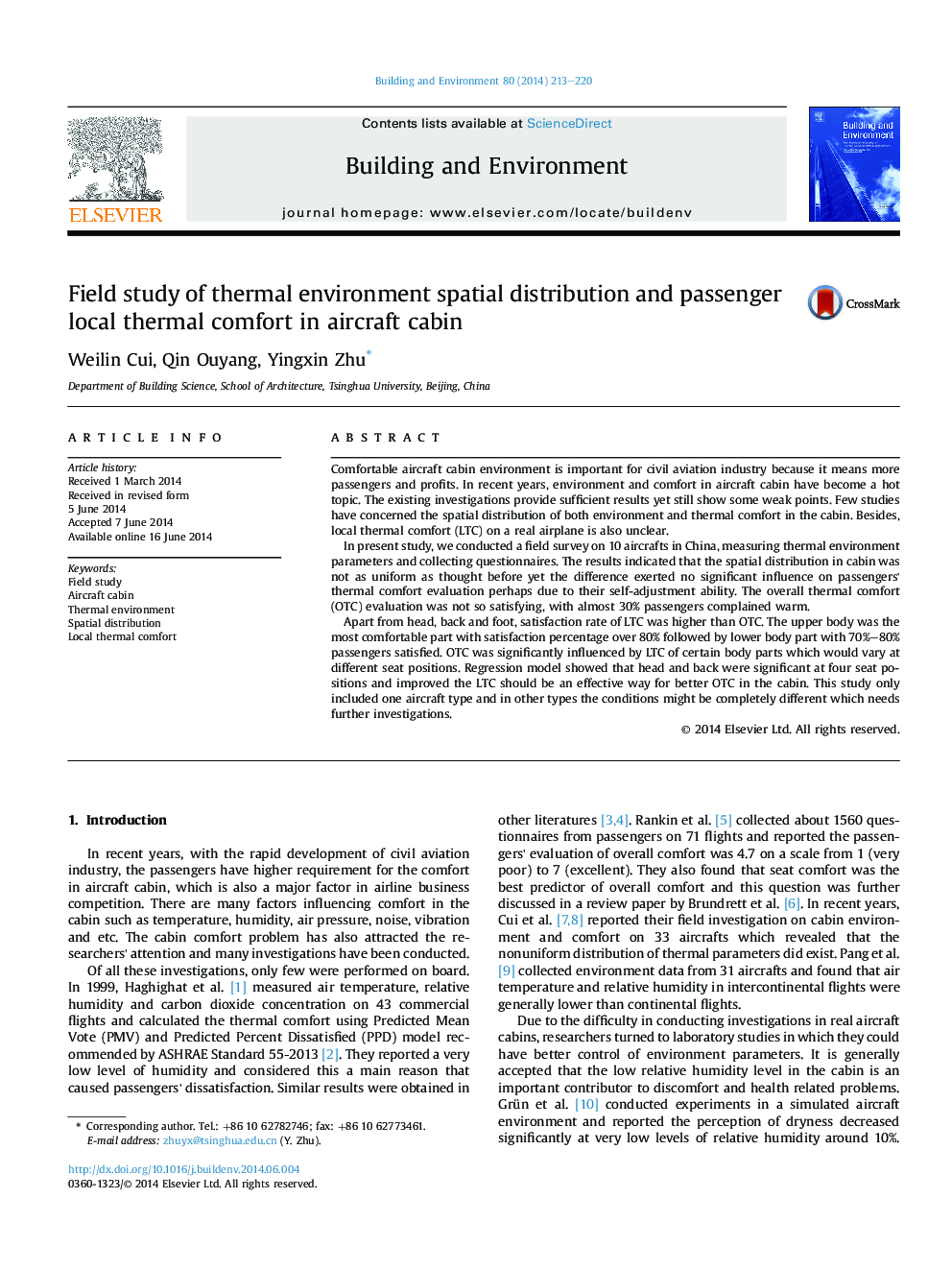| کد مقاله | کد نشریه | سال انتشار | مقاله انگلیسی | نسخه تمام متن |
|---|---|---|---|---|
| 248087 | 502543 | 2014 | 8 صفحه PDF | دانلود رایگان |
• Thermal environment was not uniformly distributed in aircraft cabin.
• Passengers were not quite satisfied with their thermal comfort.
• Warm complain was the main reason for thermal discomfort.
• Local thermal comfort evaluation varied greatly.
• Head and back exerted the most significant influence on overall thermal comfort.
Comfortable aircraft cabin environment is important for civil aviation industry because it means more passengers and profits. In recent years, environment and comfort in aircraft cabin have become a hot topic. The existing investigations provide sufficient results yet still show some weak points. Few studies have concerned the spatial distribution of both environment and thermal comfort in the cabin. Besides, local thermal comfort (LTC) on a real airplane is also unclear.In present study, we conducted a field survey on 10 aircrafts in China, measuring thermal environment parameters and collecting questionnaires. The results indicated that the spatial distribution in cabin was not as uniform as thought before yet the difference exerted no significant influence on passengers' thermal comfort evaluation perhaps due to their self-adjustment ability. The overall thermal comfort (OTC) evaluation was not so satisfying, with almost 30% passengers complained warm.Apart from head, back and foot, satisfaction rate of LTC was higher than OTC. The upper body was the most comfortable part with satisfaction percentage over 80% followed by lower body part with 70%–80% passengers satisfied. OTC was significantly influenced by LTC of certain body parts which would vary at different seat positions. Regression model showed that head and back were significant at four seat positions and improved the LTC should be an effective way for better OTC in the cabin. This study only included one aircraft type and in other types the conditions might be completely different which needs further investigations.
Journal: Building and Environment - Volume 80, October 2014, Pages 213–220
